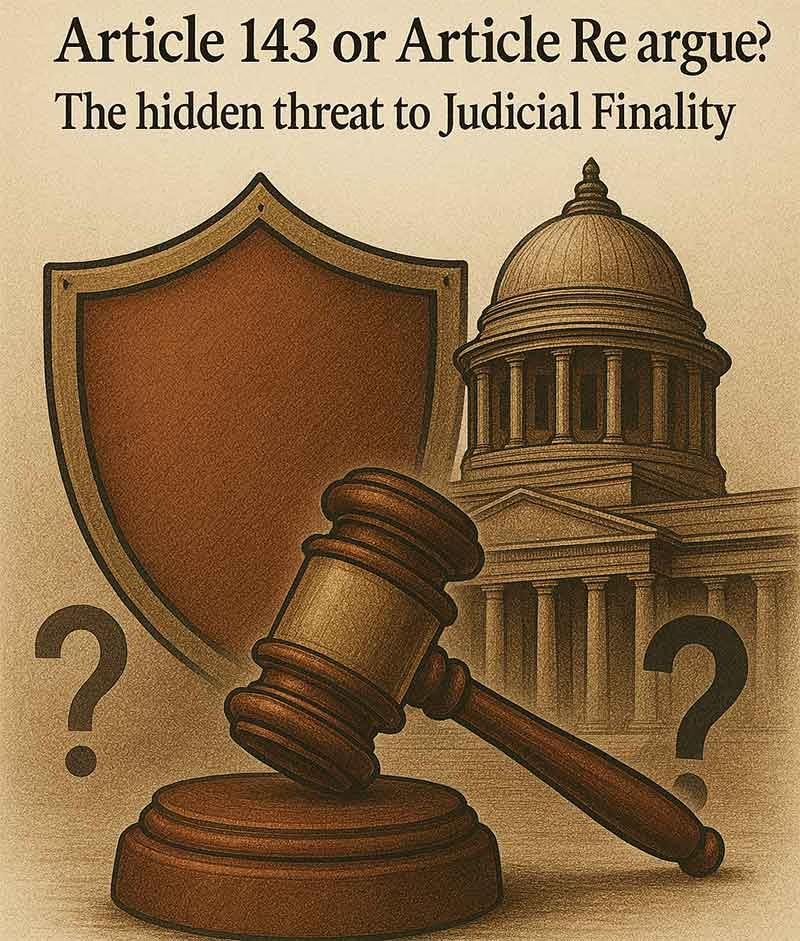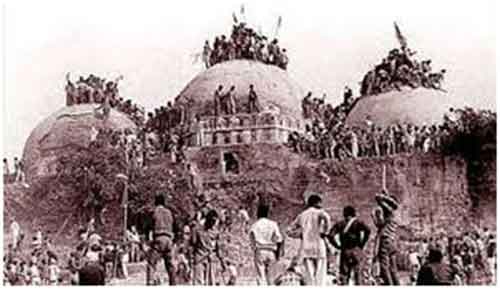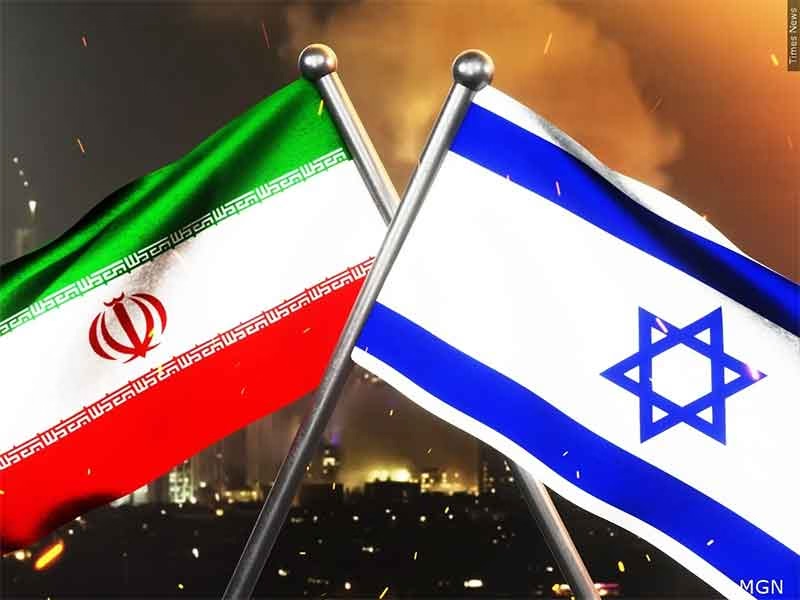
The Constitution of India is not merely a legal document but the glue that holds this quasi-federal subcontinent together. Since its inception, it has stood apart from ordinary statutes, demanding a qualitative and purposive approach to interpretation especially by the judiciary. At the heart of this vision lies the Supreme Court, the guardian and ultimate interpreter of the Constitution, wielding its Brahmastra: Article 142, which allows it to do “complete justice.”
This powerful constitutional architecture ensures that India would never be reduced to a hereditary democracy ruled by a monarch disguised in electoral robes. To safeguard against that, the office of the President was crafted indirectly elected, constitutionally bound, and nominal in power.
Constitutional interpretation is meant to be broad, dynamic, and organic—growing with time, as anticipated by the framers. The Executive, Judiciary, and Legislature were expected to operate in harmony, each within its constitutional boundaries.
The Supreme Court had recently whipped the powers of governors as whimsical appointees of the centre. Justice JB Pardiwala and Justice R. Mahadevan held that governor had no infinite powers vested in them by act of governor of Tamil Nadu withholding 10 bills as illegal and erroneous. There was no legal room for appeal, therefore there comes the strategy of reference by President. If it is clarity that is wanted, there lies the option of review. But Centre had other ideas.
The questions where the answer is already given
- What are the constitutional options before a Governor when a Bill is presented to him under Article 200 of the Constitution of India?
The same held by the Supreme Court in its judgement on TN Governor on its Page 387, conclusion para (1) as
To Assent
To Withold Assent or
To reserve the bill for the consideration of the President. - Is the Governor bound by the aid & advice tendered by the Council of Ministers while exercising all the options available with him when a Bill is presented before him under Article 200 of the Constitution of India?
In page 396, it was held that Governor is bound. - Is Article 361 of the Constitution of India an absolute bar to the judicial review in relation to the actions of a Governor under Article 200 of the Constitution of India?
In page 295, it was held that Constitution does not preclude or prohibit the courts in any manner from looking into the actions of Governor. - In the absence of a constitutionally prescribed time limit, and the manner of exercise of powers by the Governor, can timelines be imposed and the manner of exercise be prescribed through judicial orders for the exercise of all powers under Article 200 of the Constitution of India by the Governor?
Pages 204 to 209 affirmed that Supreme Court can impose reasonable time limit. - In the absence of a constitutionally prescribed timeline and the manner of exercise of powers by the President, can timelines be imposed and the manner of exercise be prescribed through judicial orders for the exercise of discretion by the President under Article 201 of the Constitution of India?
Pages 348 – 352 again affirmed the same. - In light of the constitutional scheme governing the powers of the President, is the President required to seek advice of the Supreme Court by way of a reference under Article 143 of the Constitution of India and take the opinion of the Supreme Court when the Governor reserves a Bill for the President’s assent or otherwise?
Pages 373-375 reiterated that President is not bound but constitutionally advisable for clarity. - Are the decisions of the Governor and the President under Article 200 and Article 201 of the Constitution of India, respectively, justiciable at a stage anterior into the law coming into force? Is it permissible for the Courts to undertake judicial adjudication over the contents of a Bill, in any manner, before it becomes law?
Pages 327 – 332 clarified that withholding of assent is legislative process and can be review anterior into law coming into force and in 402 – 404 summarised that such withholding may be challenged before Court when arbitrary. - Can the exercise of constitutional powers and the orders of/by the President / Governor be substituted in any manner under Article 142 of the Constitution of India?
The Supreme Court noted Perarivalan Case in Para 428 when a Governor delayed remission decision, the Supreme Court did not remand back but exercised Article 142. Page 385 – 387 noted that it is justifiable only in extreme breach on constitutional trust. - Is a law made by the State legislature a law in force without the assent of the Governor granted under Article 200 of the Constitution of India?
In page 165 clarified that it is not. - In view of the proviso to Article 145(3) of the Constitution of India, is it not mandatory for any bench of this Hon’ble Court to first decide as to whether the question involved in the proceedings before it is of such a nature which involves substantial questions of law as to the interpretation of constitution and to refer it to a bench of minimum five Judges?
The issue was not raised in this judgement - Do the powers of the Supreme Court under Article 142 of the Constitution of India limited to matters of procedural law or Article 142 of the Constitution of India extends to issuing directions /passing orders which are contrary to or inconsistent with existing substantive or procedural provisions of the Constitution or law in force?
Though the Tamil Nadu Government did not made substantive arguments for invoking Article 142, the court’s reference of AG Perarivalan Case is relevant. - Does the Constitution bar any other jurisdiction of the Supreme Court to resolve disputes between the Union Government and the State Governments except by way of a suit under Article 131 of the Constitution of India?
Para 434 (XXIV) justified the invocation of Article 32 than Article 131.
The most important questions are
1) Is the exercise of constitutional discretion by the Governor under Article 200 of the Constitution of India justiciable?
2) Is the exercise of constitutional discretion by the President under Article 201 of the Constitution of India justiciable?
Though both questions were answered in para 434 (XXIII) and (XXIV) respectively the word justiciable deserves the spotlight. The highlight of room for appeal?
Every law student would have heard the term ‘rubber stamp’ during constitutional law lectures. But recent developments beg the question: Is the President truly just that? Especially when Article 143 is invoked?
Article 143 grants the President the power to seek the advisory opinion of the Supreme Court on questions of law or fact that are of public importance. However, the Supreme Court is not obligated to respond. It may decline to answer questions that are already decided, political nature, or outside the proper scope of its advisory jurisdiction.
This provision was originally designed to avoid embarrassing situations for the central government, not to serve as a tool to reopen already settled issues that delivered, signed, sealed and uploaded in Apex Court Wesbsite. In past instances, references under Article 143 have been politely declined precisely to maintain the apolitical integrity of the Court. But often utilized by President in discretion.
But in this matter, the Hon’ble President of India had forgotten to wear the robes of discretion? Her Excellency who is empowered to summon parliament, to declare war, sitting at the top of federal office is now empowering herself to create a new appeal route for the judgement of Supreme Court itself. The provision allowing to nudge the court is now paving way to hold the shirt collar of the Highest Judiciary. But here we are watching a single word slice through the constitutional fabric of judicial independence.
Is this a constitutional courtesy or a constitutional loophole for retrying what has already been decided?
Had the Court not responded with restraint and reaffirmed its position, this reference would have set a dangerous precedent: a de facto appeal route for the Executive, masked as constitutional curiosity.
The answers to above questions can be found by reading the judgement by the Supreme Court on Governor of Tamil Nadu. If reading a 414-page judgment proved too arduous, legal advisors may be hired. If cost is the concern for her majesty, a simple ChatGPT command could have sufficed. Why trouble the highest constitutional court again unless the goal was something more?
Because let’s be honest if a private party or advocate had tried this, the Court would have dismissed it with costs, and perhaps a mild threat of contempt. But when Her Excellency does it, it’s called a reference.
Is this constitutional courtesy?
Or a constitutional loophole to re-argue what has already been decided?
Subscribe to Our Newsletter
Get the latest CounterCurrents updates delivered straight to your inbox.
Advocate M. Aswin Rome Pon Saravanan is a Junior Associate at Mangala S. Jawaharlal Associates, Tirunelveli. He was formerly the Editor-in-Chief of Indian Student Law Review, the student-run law journal of Tamil Nadu Dr. Ambedkar Law University.
















































